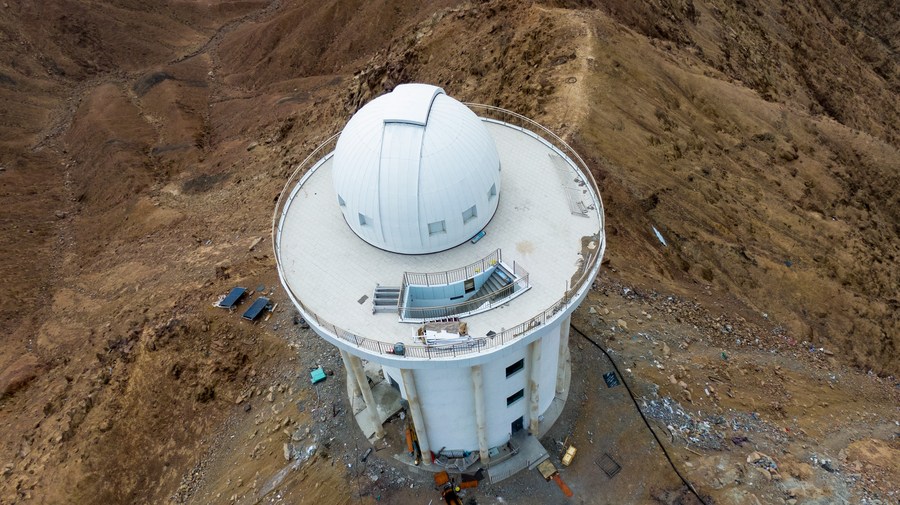Photo shows an astronomical observation facility in the Lenghu area in Northwest China's Qinghai province. [Photo/Xinhua]
XINING -- Several new facilities for astronomical observation are taking shape in the Lenghu area in Northwest China's Qinghai province, which is an ideal spot for watching the stars.
Lenghu, on the north side of the Qinghai-Tibetan Plateau, enjoys the advantages of clear night skies, stable atmospheric conditions, and a dry climate, making it one of the world's best observatory sites.
A total of nine optical astronomical telescope projects have been settled in Lenghu so far, with an investment of nearly 2 billion yuan ($310 million).
Among them, a new solar observation facility started a test run recently. The Infrared System for the Accurate Measurement of Solar Magnetic Field (AIMS) will fill a scientific gap, being the first astronomical telescope working in the mid-infrared wavelength in the world
Solar observations in the mid-infrared range have been a challenge for astronomers. They require perfect conditions for the equipment to gather the light needed. According to engineers from the National Astronomical Observatories of the Chinese Academy of Sciences, AIMS solves the problem of high ambient noise and degraded detector performance in solar observations. All system parts, including the detector chip, are domestically made
The new facility is expected to furnish a more accurate study of the Sun's magnetic field, mid-infrared imaging and spectral observation data. The Chinese astronomers plan to use it to study the generation, accumulation, triggering and energy release of magnetic energy, providing insights into the transfer of matter and energy during violent eruptions like solar flares
The Wide Field Survey Telescope (WFST), meanwhile, is currently undergoing dome construction. It will help astronomers obtain data like the high-precision position of celestial bodies, providing efficient searching and monitoring of astronomical events
The construction of the Time Domain Observatory (TIDO) project and the Multiplexed Survey Telescope (MUST) project were also launched in Lenghu last year
The 6.5-meter MUST, developed by Tsinghua University, will be the largest telescope in Lenghu upon completion. Scientists using MUST hope to make breakthroughs in dark energy evolution, gravitational wave cosmology, and galaxy formation.
Last October, Qinghai Province approved the country's first local regulation to protect the night sky in Lenghu.
The regulation took effect from Jan 1 this year. The observation site in Lenghu will have two designated dark preservation areas, a dark core zone and a buffer zone, to ensure its optical observation environment at night.
Source: By Xinhua News Agency, Apr. 30, 2023 [https://www.chinadaily.com.cn/a/202304/30/WS644da5dfa310b6054fad08a9.html]


